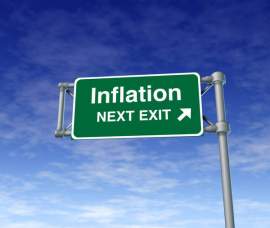
What to Know About Yield to Maturity

Yield To Maturity
Yield to maturity, also known as the redemption yield of a bond, is the internal rate of a return that an investor will receive upon the maturity of a privately or government issued bond. A bond is a debt security where the authorized issuer owes the holder a debt. Unlike stocks--which are equity--and give the shareholder a stake in the institution, bonds are treated like a debtor/creditor relationship where the debtor is the institution selling the bond and the creditor is the individual who purchased the bond. A bond does not give the debtor any interest in the institution, but instead, obligates the debtor (issuing institution) to pay the creditor (holder) interest, in the form of a coupon, until the bond reaches its maturity.
Yield to maturity is calculated by an A.P.R. (annual percentage rate) but the interest is actually dispersed in a semi-annual basis in which the debtor will receive a coupon, consisting of the percentage of the face amount plus interest. For example, if a 10 year bond is sold with a face amount of $100 at 10% Yield to Maturity that means that every 6 months the debtor will receive a coupon of $5.50 (The $100 face amount + $10 (the interest accumulated over the 10 year life of the bond) / 24 (the number of coupons that are distributed over the 10 year period).
When looking at bonds you will want to know the basics defining certain aspects of a bond:
FACE AMOUNT: The amount that the bond is worth on its face.
ISSUE PRICE: Is the amount of money that the debtor pays for the bond. The issue price is not necessarily the amount that the bond is equal to. Often bonds are sold at a discount where a debtor will buy a $100 bond for $75. Upon maturity the debtor will receive $100 plus interest.
MATURITY DATE: This is the amount of time it will take for the bond to mature to the face amount. Bonds that have a maturity date of less than one year are not necessarily bonds and are referred to as Money Market Securities
COUPON: This is the amount that the debtor will receive on a semi-annual or annual basis, depending on the bond, The Coupon signifies the payment of the creditor to the debtor in compliance with the bond agreement.
Yield to maturity rates depend on a number of factors including the current market rates, the term length and the overall creditworthiness of the issuer. Typically the longer the bond maturity length the higher the yield to maturity will be. On the same note, the more stable the issuer the less the yield to maturity rate will be. United State Treasury Bonds are considered to be one of, if not the most, stable bond an investor can purchase. The return on your investment is practically guaranteed and for that reason the coupon amount and the yield to maturity will be lower.
NEXT: Personal Finance





















